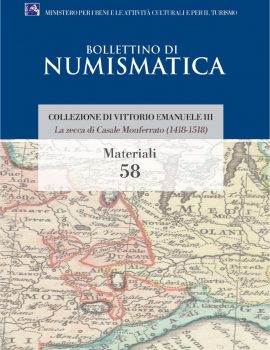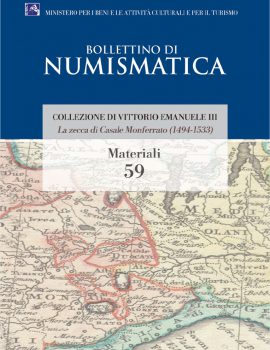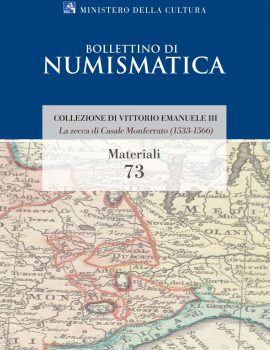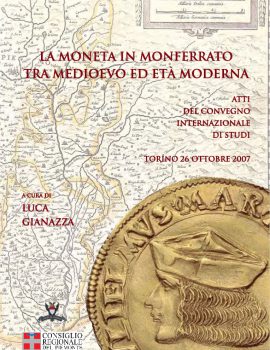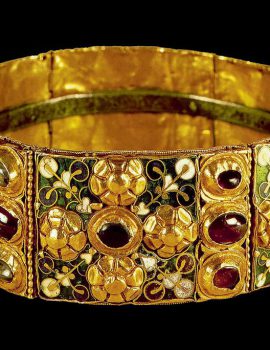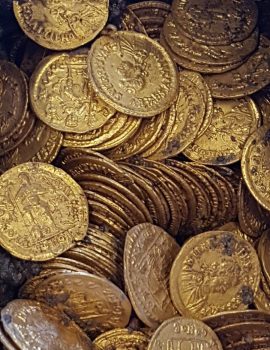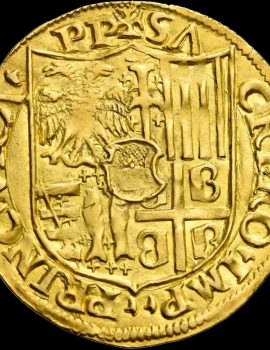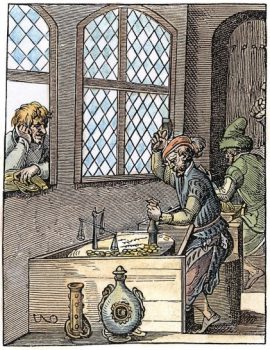Money of Montferrat
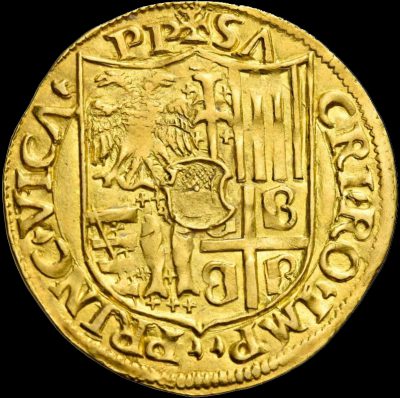
Rediscussing the Monetary History of a small territory with a great past
Bounded by the Duchy of Savoy to the north and west, the Duchy of Milan to the east, and the Republic of Genoa to the south, the Monferrato (whether by this term, we mean the institution or the territorial reality) has often been, due to its very conformation, the main actor of political and military events that have transcended the local reality. A region that has its main nucleus in that part of Piedmont enclosed between the Po and Tanaro rivers, a state born from the disintegration of the Regnum Italiae in the 10th century, Montferrat is first and foremost the expression of an identity that has crossed the centuries unscathed, still enduring today.
On a purely administrative level, the boundaries of the Marquisate (later, from 1575, the Duchy) of Montferrat often appear uncertain. It is possible to recognize two large territorial areas, respectively headed by the city of Casale Monferrato to the north (Basso Monferrato) and Acqui Terme to the south (Alto Monferrato), which over the centuries underwent expansion and contraction, for long periods remaining separate regions and thus depriving the state of territorial continuity. Even at the height of its expansion, its overall extension was never remotely comparable to that of the great states around it, such as the Duchies of Milan and Savoy, but remained limited to little more than what are now the provinces of Asti and Alessandria.
The Marquisate of Montferrat minted its coinage from the second-third quarter of the 13th century, but it was always influenced by the work of the main mints of the neighboring states, forcing the government of Montferrat to relate to these states, with the differences inherent in their monetary systems and with the choices they made regarding monetary policy. The coins produced in Montferrat bear the elements of this relationship with the types struck by foreign mints and with economic phenomena originating in territories that were very distant but which nevertheless had important manifestations there. We can recognize influences from the coinage of Milan or Savoy or reflections of coinage apparently completely extraneous to the local context – Swiss batzen, French liards, German thalers – but which find justification for their presence in Montferrat as soon as they are contextualized, for example, in the production panorama of the Milanese and Savoy mints, or occasional monetary imbalances in the territories relative to them.
Casale Monferrato was the main mint in Montferrat, but not the only one. Before its opening, coins were minted in Chivasso and Moncalvo, with the latter locality possibly also being the site of the very first issues of the mid-13th century. During the occupation of Asti by Giovanni I and Secondotto Paleologo, the mint of that city issued pieces in the name of the sovereign of Montferrat which, according to certain interpretations, can be considered expressions of the currency of the Marquisate of Montferrat. Without forgetting the coins produced by Manfredo IV of Saluzzo during the struggles for succession to the marquisate throne following the death without direct heirs of the Marquis Giovanni Aleramico: even if the place of their issue cannot be identified with certainty (the traditional attribution to Chivasso raises more than one doubt), the title of marchio Montis Ferrati that Manfredo attaches to his name binds these coins to all effects to the marquisate institution.

Authored books
Museo Nazionale Romano. The numismatic collection of king Victor Emmanuel III of Savoy. Part I: from Gian Giacomo Paleologo (1418-1445) to Guglielmo II Paleologo (1494-1518)
Museo Nazionale Romano. The numismatic collection of king Victor Emmanuel III of Savoy. Part II: from Guglielmo II Paleologo (1494-1518) to Giovanni Giorgio Paleologo (1530-1533)
Museo Nazionale Romano. The numismatic collection of king Victor Emmanuel III of Savoy. Part III: from Charles V of Augsburg (1533-1536) to Guglielmo Gonzaga (1550-1566, regency of Margherita Paleologo)

Edited books

Congress presentations
Congress Il trattato di Utrecht e il Monferrato. Problemi europei e assetti regionali, Casale Monferrato, November 30th 2013. Paper titled Tramonto di una nazione. Problemi monetari del Monferrato post-gonzaghesco (view presentation)
Congress La moneta in Monferrato tra Medioevo ed Età Moderna, Turin, October 26th 2007. Paper titled Il sistema monetario del Monferrato gonzaghesco: influenze e sviluppi (1536-1590) (view presentation | read paper)
Congress Il Monferrato tra Paleologi e Gonzaga, Cuccaro Monferrato (AL), October 28th 2006. Paper titled Le ultime fasi della zecca di Casale Monferrato (view presentation | read paper)
Congress Chivasso capitale dei Paleologi di Monferrato, Chivasso (TO), September 16th 2006. Paper titled La monetazione dei Paleologo in Monferrato: una rilettura dei materiali (view presentation | read paper)

Congress proceedings
Le ultime fasi della zecca di Casale Monferrato, in R. Maestri and B.A. Raviola (eds.), Fine di una Dinastia, fine di uno Stato. La scomparsa dei Ducati di Mantova e di Monferrato dallo scacchiere europeo (Alessandria, 2010), 91-118 (read)
Il sistema monetario del Monferrato gonzaghesco: influenze e sviluppi (1536-1590), in L. Gianazza (ed.), La moneta in Monferrato tra Medioevo ed Età Moderna. Atti del convegno internazionale di studi. Torino 26 ottobre 2007 (Torino, 2009), 155-204 (read)
La monetazione dei Paleologo in Monferrato: una rilettura dei materiali, in R. Maestri (ed.), La Chivasso dei Paleologi di Monferrato (s.l., 2007), 29-48 (read)

Other publications
La production de faux liards en Italie du Nord entre 1578 et 1587, Revue Numismatique 179 (2022), 285-302 (read)
Le monete di Carlo II Gonzaga-Nevers. Seconda parte, Il Giornale della Numismatica 12 (2012)
Le monete di Carlo II Gonzaga-Nevers. Prima parte, Il Giornale della Numismatica 11 (2012)
Inquadramento delle emissioni di grosso modulo in argento nei Ducati di Mantova e Monferrato (1587-1626), Rivista Italiana di Numismatica e Scienze Affini 112 (2011), 255-300 (read)
Le monete di Carlo I Gonzaga-Nevers per il Monferrato, Cronaca Numismatica 20.207 (2008), 34-42
Influenze della riforma monetaria di Emanuele Filiberto di Savoia sulla zecca di Casale Monferrato, Rivista Italiana di Numismatica e Scienze Affini 107 (2006), 213-36 (read)
Il «San Patrizio» moneta di Casale Monferrato, Noi con la Lente 17.4 (2006), 12-5 (read)

Lectures
Le ricerche numismatiche di Giorcelli e Valerani e i cento anni del “Corpus Nummorum Italicorum”, Casale Monferrato (AL), June 5th 2010 (view presentation)

Organization of congresses
Congress La moneta in Monferrato tra Medioevo ed Età Moderna, Turin, October 26th 2007 (view poster | read programme)
